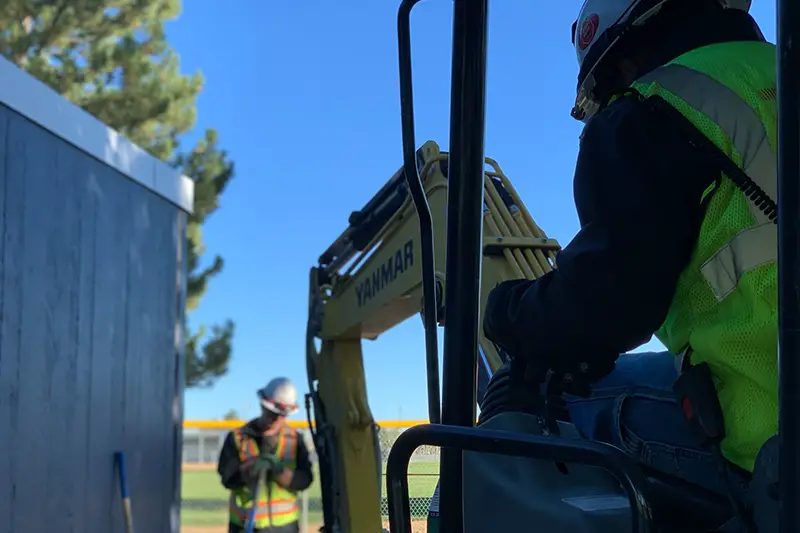Click here to get this post in PDF
Hydro excavation is a non-mechanical, non-destructive, and ecologically friendly excavation method that excavates and removes soil simultaneously using pressurised water and an industrial-strength vacuum. The expert of this are the vacuum excavation contractors.
Hydro excavation is also known as vacuum excavation, hydro-vacuuming, hydro-trenching, potholing, soft digging, and daylight excavation. Read on to know more about its applications.
Hydro Excavation Construction Is Used In Three Main Industries
Plumbing
The majority of plumbing lines are buried. Plumbers must dig underground to install new pipes, remove old ones, and perform repairs. Hydro excavation is critical in the plumbing industry because it allows plumbers and their teams to dig underground without causing damage to existing plumbing pipes or other utility lines. It guarantees that the work is accurate and finished promptly.
Construction
Hydro excavation is popular in the construction sector because it gets the job done precisely and rapidly. Construction work does not impede traffic and does not require a lot of room for larger projects with limited circulation space, especially in congested locations and huge cities. Unlike other methods such as manual digging, the sludge and soil are dumped near the project, taking more room.
Hydro excavation is most commonly used in the construction industry to dig foundations. Excavation must be done precisely and with utmost precision to lay a sturdy foundation. Hydro excavation accomplishes all of these things and more.
Landscaping
Landscaping necessitates the creation of particular holes in regions where plants and trees must be planted. Hydro excavation allows these holes to be dug precisely without causing harm to the surrounding areas, resulting in less ground/soil repair and restoration work when the excavation is completed.
Hydro Excavation’s Applications
Hydro excavation is still used in various applications, including general construction, utility maintenance, and infrastructure repair and maintenance. These are some of them:
Daylighting is the process of removing the dirt that covers existing utility services so that the lines may be inspected and repairs can be made.
Slot trenching is the excavation of narrow trenches to install pipelines, wires, and other utility services.
Piling home excavation involves removing soil to the necessary depth in a small area to put poles, signs, posts, or pilings to support aboveground structures.
Other uses for hydro excavation include landscaping, maintaining sewer and cesspool connections for homeowners, and cleaning soil and garbage from a home or building site.
Why Choose Hydro Excavation?
Here are a few reasons why you should try hydro-excavating before you start building.
Security: Hydrovac excavation eliminates the chance of utility damage and avoids accidents.
Lesser Costs: It is possible to lose a lot of money otherwise if you make a mistake. Hydro excavation is a safe and effective way to excavate a location.
Non-Destructive: Hydro excavation services can be used on almost any type of soil. This method of excavation provides a higher level of precision, resulting in less material disposal and, as a result, less restoration.
How Does It Work?
Hydro digging equipment is usually in the form of specially constructed trucks or trailers that contain all of the necessary components. The following are the main functional components of hydro-excavating equipment:
- One or more onboard water tanks will be utilised to generate a pressured stream of water to cut through the earth.
- A powered pump system that raises the water jet’s pressure to several thousand psi, equivalent to what you’d find in a pressure washer, and high enough to cut through dirt and compacted terrain with ease.
- An articulating boom with suction hoses directs the slurry combination of soil and water from the excavation area back into the storage tank of the truck or trailer.
- To recover the slurry, a vacuum blower or vacuum pump system exerts suction on the vacuum hoses.
- A large enough trash tank to catch the deposited slurry drawn by the vacuum system.
- A boiler that can heat the water before pressurisation is available on some versions, allowing the hydro excavator to be operated in conditions where the ground is frozen.
The Process
Vacuum excavation contractors guide a pressured water jet to the ground, where excavation will accomplish hydro excavation. As the water penetrates and combines with the soil, the jet cuts through any grass or topsoil and begins to loosen it.
A second operator operates the articulating boom, which houses the vacuum system and hoses to remove the water and soil mixture as it loosens, allowing the water jet to loosen more soil at lower depths.
This procedure is repeated until the required depth and size of the dig have been achieved. After the operation on site is over, the hydrovac truck or trailer must be taken to a designated dumping area where the collected slurry mixture can be offloaded and the debris tank cleaned and ready for future use.
Over and above, hydro excavation has a variety of advantages in the world of industrial excavation. It has become the favoured way of excavating due to its speed and accuracy.
You may also like: The Importance Of Good Plumbing For Your Workplace
Image source: Unsplash.com

